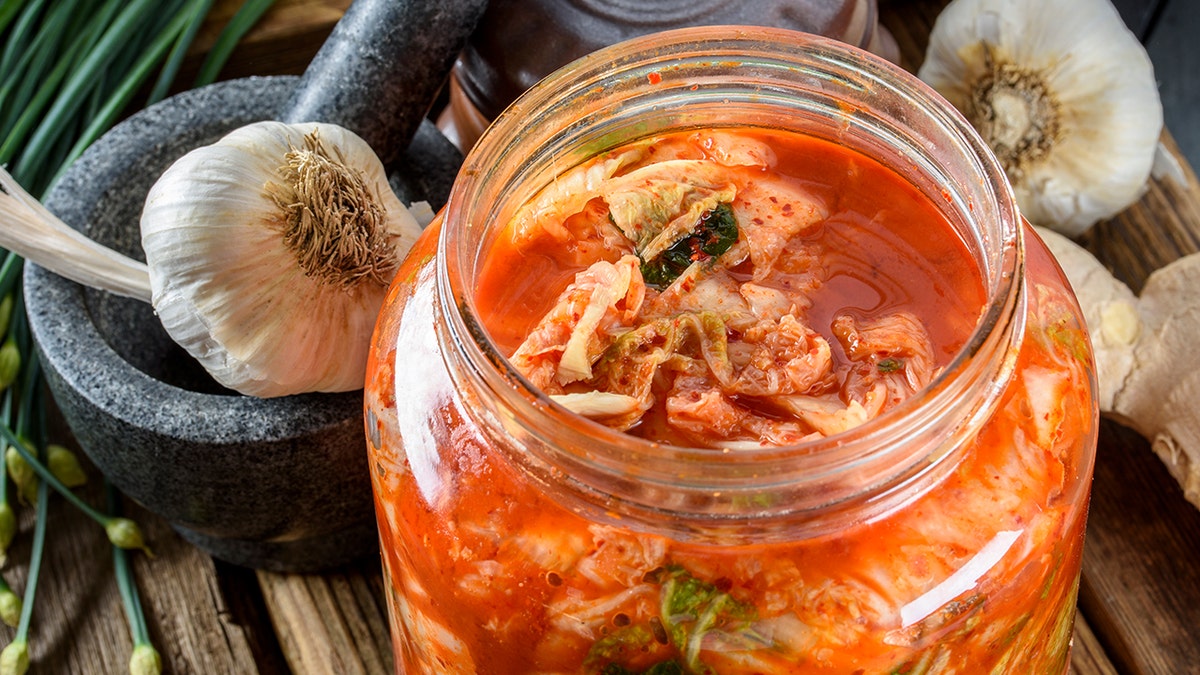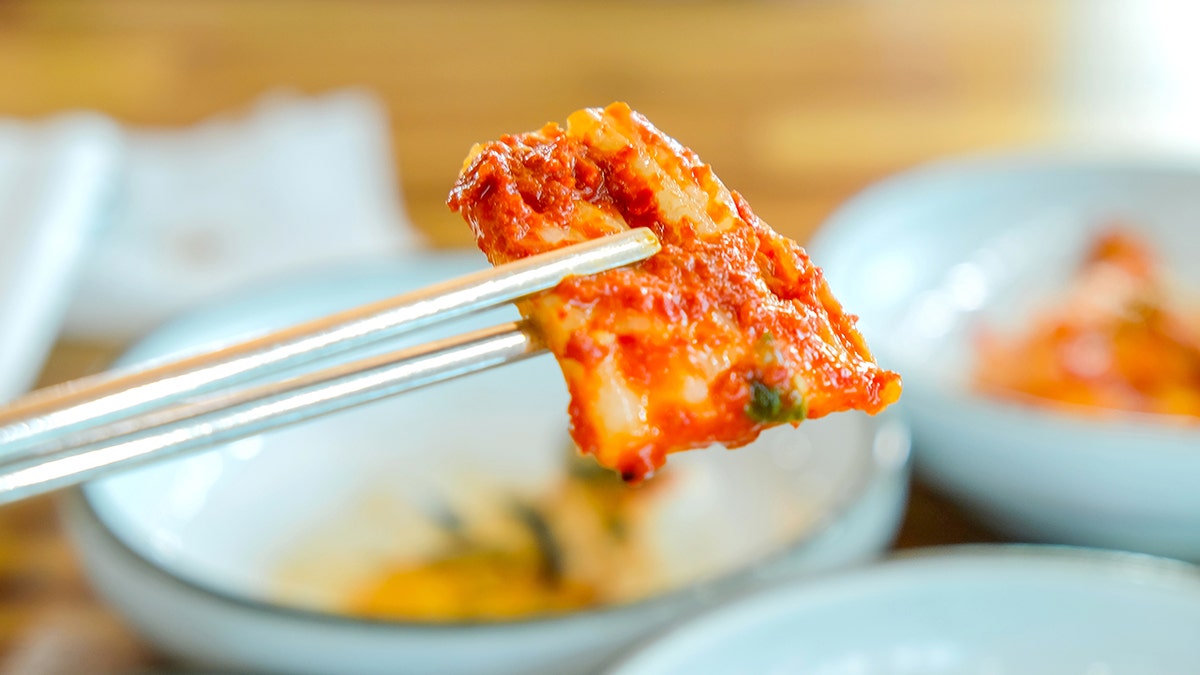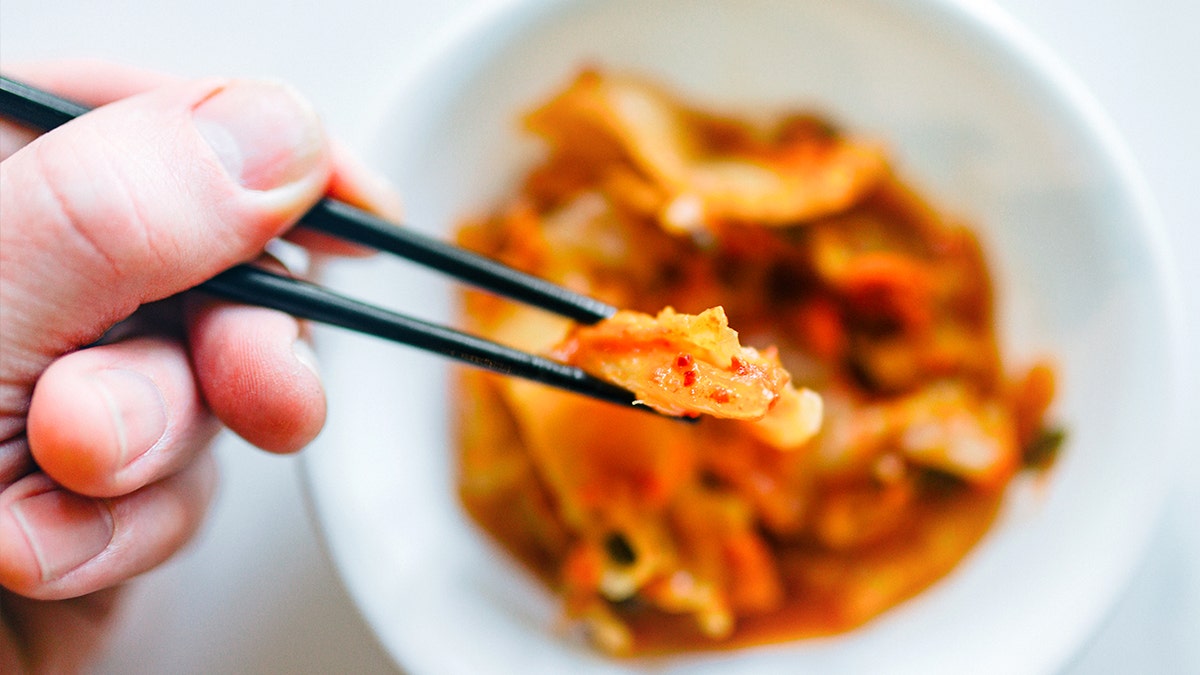

A crunchy, tangy side dish from Korea might be the key to lowering blood pressure and improving health – but there's a catch.
Kimchi, a fermented cabbage dish with a history that goes back centuries, is enjoyed alongside breakfast, lunch and dinner in Korea.
Its flavor comes from lacto-fermentation and seasonings like garlic and Korean chili powder, or gochugaru. A recent University of Connecticut study found that it can help lower blood pressure, blood sugar and triglyceride levels.
YOU CAN EAT BREAD AND STAY FIT: HERE ARE 9 HIGH-FIBER OPTIONS FROM A HEALTH COACH
In addition to its appearance in Korean restaurants, kimchi is commonly added to fusion meals such as kimchi fried rice, kimchi tacos and kimchi grilled cheese. You can also find it in the refrigerated section of many American supermarkets.
So what's the science behind kimchi – and what can it do for you? Fox News Digital reached out to an expert for insight.

Kimchi, Korea's famous fermented cabbage dish, has been linked to improved blood pressure and heart health. (iStock)
Dr. Shad Marvasti, executive director of the Integrative Health and Lifestyle Medicine Institute at HonorHealth in Arizona, described kimchi as a superfood for its probiotic qualities.
"It combines the power of probiotic fermentation with nutrient-dense vegetables," the Arizona-based health expert told Fox News Digital.
IS PICKLE JUICE ACTUALLY GOOD FOR YOU? EXPERTS WEIGH IN ON THE DEBATED HYDRATION METHOD
"Beyond probiotics, kimchi is also packed with fiber from the cabbage and other vegetables, as well as antioxidants and vitamins A, C and K."
""Consistency of small portions daily over time matters more than quantity at one sitting."
The benefits, Marvasti said, come from the key components of kimchi: garlic, ginger and chili peppers.
"The garlic provides antimicrobial and blood sugar and blood pressure lowering compounds, ginger aids in digestion and reduces inflammation, and chili peppers also reduce inflammation," he noted.
'FOOD IS MEDICINE' MOVEMENT MAY BE KEY TO REVERSING HEALTH DECLINE: HERE'S WHAT TO EAT
To reap the benefits, you don't need to load up on kimchi with every meal. Marvasti said eating a quarter-cup of kimchi several times a week is enough to introduce necessary probiotics and phytonutrients into your gut biome.
"You don't need to eat a large bowl," he said. "Consistency of small portions daily over time matters more than quantity at one sitting."

Kimchi is made with garlic, chili powder and cabbage, giving it probiotics and powerful anti-inflammatory qualities. (iStock)
But there's a tradeoff. Even though kimchi was found to lower blood pressure in the UConn study, it's usually packed with sodium.
That means kimchi's beneficial bacteria could potentially offset the hypertensive effects of sodium, although the research is not conclusive.
People with high blood pressure should consult a doctor before adding large amounts of kimchi to their diet.
"For most healthy adults, moderate intake is not an issue, but people with high blood pressure or heart disease should be mindful of how kimchi fits into their total daily sodium," Marvasti said.

Kimchi's tangy and spicy flavor has made it a versatile addition to American fusion dishes and snacks. (iStock)
"Some very spicy kimchi may also trigger heartburn in sensitive individuals. The key is balance. Enjoy kimchi as part of a whole-food, plant-forward diet. Small portions over time can make a big impact."
Kimchi has a unique flavor profile, making it "tangy, savory, slightly sour and pleasantly spicy, with an umami depth from fermentation," Marvasti said.

For newcomers, experts suggest using kimchi as a side dish, condiment or garnish in everyday meals. (iStock)
"For newcomers, start small. Use it as a flavorful side dish, a topping for rice or grain bowls or as a garnish in tacos, sandwiches or omelets."
"Adding it as a condiment helps you adjust to the taste while still getting the benefits," Marvasti said.
